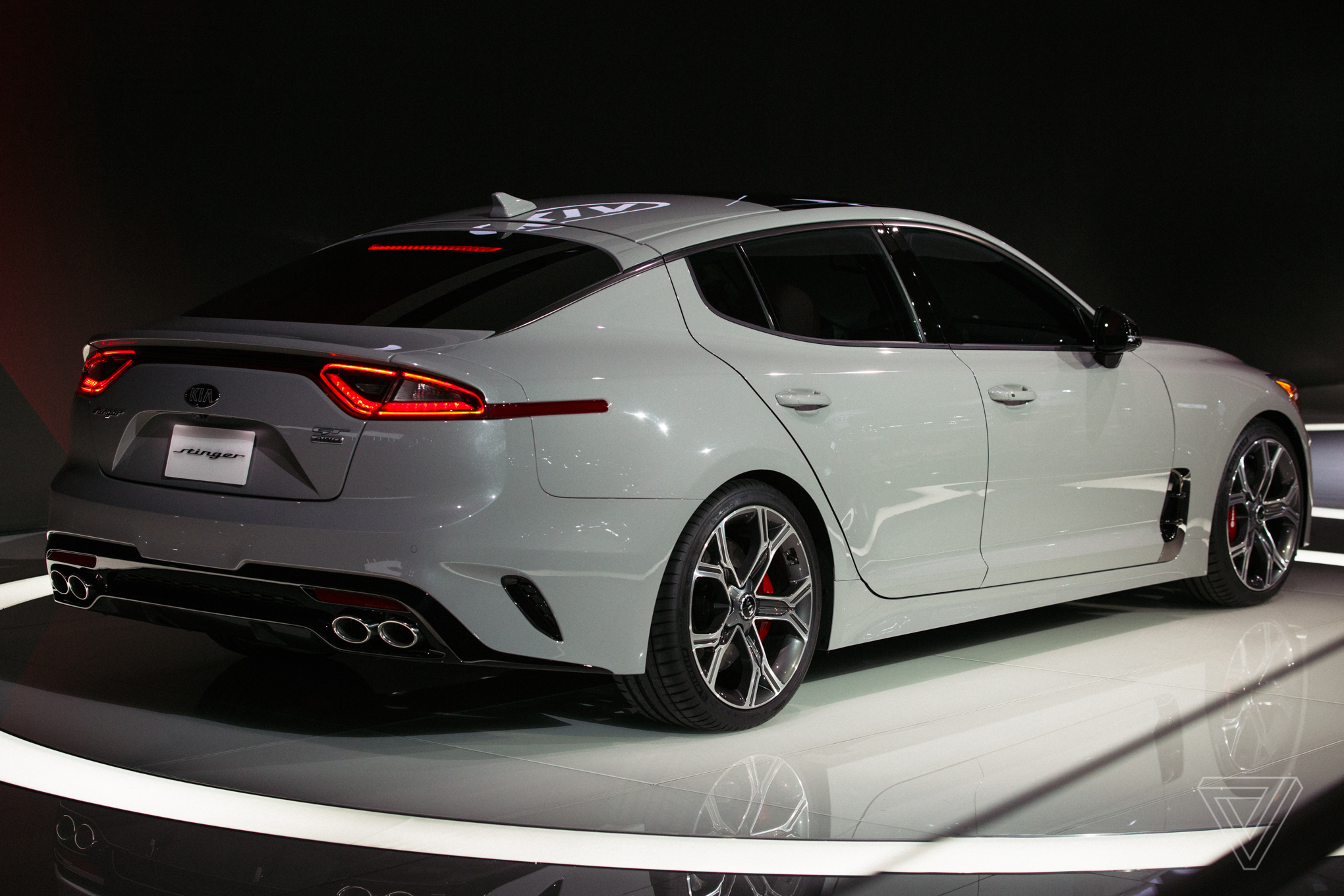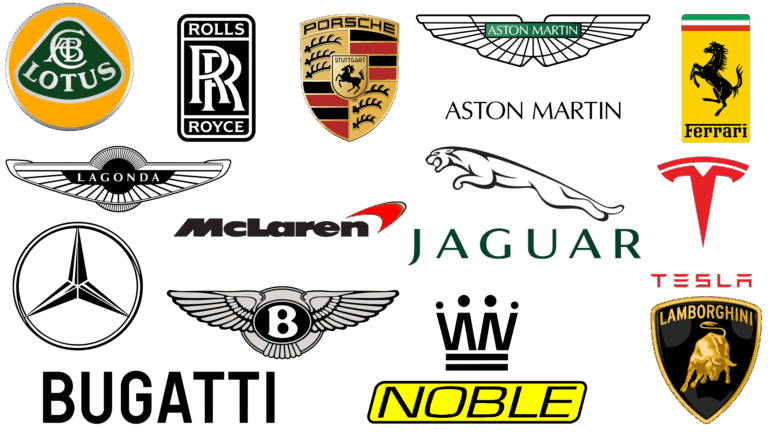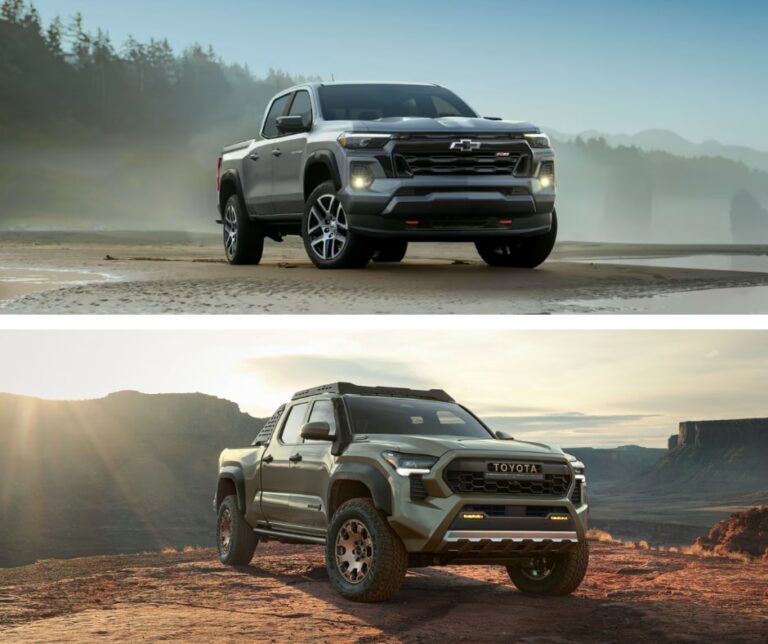What Brand Is A Stinger Car? Unveiling the Performance Beast
What Brand Is A Stinger Car? Unveiling the Performance Beast cars.truckstrend.com
In the automotive world, certain names evoke a sense of excitement, power, and unexpected prowess. The "Stinger" is undoubtedly one of them. For many, its sleek lines, aggressive stance, and reputation for impressive performance immediately bring to mind a premium European sport sedan. However, the answer to the question, "What brand is a Stinger car?" often surprises those unfamiliar with its origins. The Stinger, a vehicle that profoundly reshaped perceptions and challenged established norms, proudly bears the badge of Kia.
Yes, Kia – the South Korean automaker historically known for its practical, value-oriented, and often unassuming vehicles – is the brand behind the formidable Stinger. Its introduction marked a pivotal moment for Kia, signaling a bold departure from its traditional image and a serious foray into the performance luxury segment. The Stinger wasn’t just another car; it was a statement, a testament to Kia’s burgeoning engineering capabilities and design ambition, proving that a brand could evolve dramatically and deliver a truly compelling driver’s car. This article will delve deep into the Kia Stinger, exploring its genesis, design, performance, and the significant impact it had on both the brand and the broader automotive landscape.
What Brand Is A Stinger Car? Unveiling the Performance Beast
The Genesis of the Stinger: A Bold Leap for Kia
For decades, Kia carved out its niche by offering reliable, feature-packed cars at competitive prices. While successful, this strategy left the brand largely outside the conversation when it came to performance or premium driving experiences. This began to change in the late 2000s and early 2010s with the appointment of renowned designer Peter Schreyer (formerly of Audi) and later, Albert Biermann (formerly head of BMW’s M performance division). These strategic hires were instrumental in charting a new course for Kia, one that emphasized design appeal and dynamic driving.
The concept for the Stinger first emerged as the Kia GT Concept at the 2011 Frankfurt Motor Show. It was a rear-wheel-drive, four-door sports sedan concept that hinted at Kia’s future aspirations. Fast forward to 2017, and the production version, christened the "Stinger," debuted to widespread acclaim. Its arrival sent shockwaves through the industry. Here was Kia, challenging established titans like BMW, Audi, and Mercedes-Benz on their home turf – the performance sedan market – with a car that promised compelling dynamics, striking design, and an attractive price point. It was a calculated risk, aimed at elevating Kia’s brand image globally and attracting a new segment of discerning buyers who valued performance and style.
Design and Engineering Philosophy: More Than Just a Pretty Face
The Kia Stinger’s success wasn’t just about a surprising badge; it was fundamentally about its thoughtful design and sophisticated engineering.
Design Language: The Stinger’s exterior, penned under the guidance of Peter Schreyer, is undeniably its first major draw. It adopted a sleek, fastback-style silhouette, blending the practicality of a hatchback with the aggressive lines of a sports sedan. Key design elements include:
- Long Hood, Short Front Overhang: Giving it classic rear-wheel-drive proportions.
- Aggressive Tiger-Nose Grille: Kia’s signature, but rendered here with a more assertive, wider stance.
- Muscular Haunches and Quad Exhaust Tips: Emphasizing its performance credentials.
- Sloping Roofline: Seamlessly integrating the rear hatch for a coupe-like appearance.
- Functional Air Vents: Not just for show, they contribute to aerodynamic efficiency and brake cooling.


The design was a deliberate effort to evoke emotion and convey a sense of speed and elegance, standing out in a segment often dominated by conservative designs.
Engineering Prowess: Beneath its captivating skin, the Stinger was engineered from the ground up to be a true driver’s car. Albert Biermann’s influence was crucial here, focusing on chassis dynamics, steering feel, and overall handling.
- Rear-Wheel-Drive Biased Platform: While all-wheel-drive (AWD) was available, the Stinger was fundamentally designed as a RWD vehicle, allowing for a more engaging driving experience and better weight distribution.
- Stiff Chassis: A robust platform was essential for precise handling and stability, especially at higher speeds.
- Suspension Tuning: Featuring MacPherson struts at the front and a multi-link setup at the rear, the suspension was meticulously tuned at Kia’s Nürburgring test center in Germany. Available adaptive dampers further enhanced its ability to switch between comfortable cruising and spirited driving.
- Brembo Brakes: High-performance Brembo brakes were standard on GT models, ensuring confident stopping power commensurate with the car’s speed capabilities.

This combination of alluring design and rigorous engineering transformed the Stinger into a genuine competitor in the performance sedan segment, challenging preconceived notions about what a Kia could be.
Powertrain Options and Performance: The Heart of the Beast
The driving force behind the Kia Stinger’s appeal lay in its potent powertrain options, which delivered exhilarating performance across its range.
- 2.0L Turbocharged Four-Cylinder (Theta II T-GDI): This entry-level engine, while smaller, was no slouch. Producing around 255 horsepower and 260 lb-ft of torque (specific figures varied slightly by market and model year), it provided a lively and efficient driving experience, making the base Stinger a compelling package for those seeking style and adequate power without the full GT performance.
- 3.3L Twin-Turbocharged V6 (Lambda II T-GDI): This was the crown jewel of the Stinger lineup, particularly in the GT models. Initially rated at 365 horsepower and 376 lb-ft of torque, later iterations saw a slight bump to 368 horsepower. This engine transformed the Stinger into a true performance machine, capable of blistering acceleration (0-60 mph in under 4.7 seconds) and effortless highway cruising. Its strong mid-range torque provided instant response, making overtakes a breeze.
- 2.5L Turbocharged Four-Cylinder: For its final model years, some markets received a new 2.5L turbo-four engine, replacing the 2.0L. This engine offered a healthy upgrade, producing 300 horsepower and 311 lb-ft of torque, bridging the gap between the original four-cylinder and the V6.
All Stinger models were paired with a smooth and responsive 8-speed automatic transmission, which offered quick shifts and could be controlled via paddle shifters for a more engaging experience. Drivetrain options included standard Rear-Wheel Drive (RWD) for a purer sports car feel and available All-Wheel Drive (AWD) for enhanced traction and all-weather capability, particularly beneficial in colder climates. The AWD system also featured dynamic torque vectoring, intelligently distributing power to the wheels with the most grip.
Interior and Technology: Comfort Meets Innovation
Beyond its performance credentials, the Kia Stinger also impressed with its well-appointed interior and comprehensive suite of technology. Kia aimed for a premium feel, and largely succeeded.
- Premium Materials and Design: The cabin featured soft-touch materials, metallic accents, and available Nappa leather upholstery. The design was driver-focused, with a low-slung seating position and a logically laid-out dashboard. The turbine-style air vents and floating touchscreen added a touch of sophistication.
- Comfort and Ergonomics: The seats were designed for long-distance comfort and good bolstering for spirited driving. Despite its sloping roofline, rear-seat passenger space was surprisingly adequate, making it a viable option for four adults. The hatchback design provided practical cargo space, further enhancing its appeal as a daily driver.
- Infotainment and Connectivity: A large touchscreen infotainment system (7-inch or 8-inch, later 10.25-inch depending on model year) was standard, offering intuitive controls, Apple CarPlay, Android Auto, Bluetooth connectivity, and available navigation. Premium audio systems, such as Harman Kardon, provided an immersive listening experience.
- Advanced Driver-Assistance Systems (ADAS): The Stinger was equipped with a comprehensive suite of safety and driver-assistance features, including:
- Forward Collision-Avoidance Assist (FCA)
- Lane Keeping Assist (LKA)
- Blind-Spot Collision Warning (BCW)
- Rear Cross-Traffic Collision Warning (RCCW)
- Smart Cruise Control with Stop & Go
- Driver Attention Warning (DAW)
These systems contributed to the Stinger’s strong safety ratings and provided peace of mind for the driver.
Trim Levels and Evolution: Tailoring the Experience
Throughout its production run, the Kia Stinger was offered in various trim levels, allowing buyers to choose a configuration that best suited their needs and budget. While specific trims could vary by market and model year, common designations included:
- GT-Line: Typically the entry-level for the sportier aesthetic, often paired with the four-cylinder engine but featuring the Stinger’s signature aggressive styling elements. It offered a strong balance of features and value.
- GT: The heart of the performance lineup, equipped with the potent 3.3L twin-turbo V6 engine, performance brakes (often Brembo), sport-tuned suspension, and unique exterior accents.
- GT1 and GT2: These trims built upon the GT, adding increasing levels of luxury, technology, and convenience features. GT2 models, for instance, often came fully loaded with features like Nappa leather, ventilated seats, a head-up display, and a more advanced infotainment system.
Over its lifespan, the Stinger received minor updates and facelifts, often bringing refreshed styling elements, upgraded infotainment screens, new wheel designs, and minor powertrain refinements (like the introduction of the 2.5L engine in some markets). These updates kept the Stinger competitive and relevant in a fast-evolving market.
Why the Kia Stinger Stood Out (and Why It’s Missed)
The Kia Stinger carved out a unique niche for itself, offering a compelling blend of attributes that made it a standout choice for many:
- Exceptional Value Proposition: It delivered performance and luxury features comparable to European rivals, but often at a significantly lower price point, making performance more accessible.
- Engaging Driving Experience: Its RWD-biased platform, powerful engines, and well-tuned chassis made it genuinely fun to drive, both on spirited roads and during daily commutes.
- Brand Perception Shift: More than just a car, the Stinger was a halo vehicle for Kia, fundamentally altering how the brand was perceived globally. It proved Kia’s capability to build desirable, high-performance vehicles.
- Practicality: Unlike many pure sports cars, the Stinger’s hatchback design offered surprising cargo versatility, blending performance with everyday usability.
Despite its critical acclaim and strong fan base, Kia announced the discontinuation of the Stinger in most markets by 2023. The reasons for this decision are multi-faceted:
- Market Shift to SUVs: Consumer preference has overwhelmingly shifted towards SUVs and crossovers, impacting sales of traditional sedans and sportbacks.
- Rise of Electric Vehicles (EVs): Kia, like many automakers, is heavily investing in its electric vehicle future. Resources are being redirected towards EV development, with models like the EV6 GT now carrying the performance torch.
- Sales Volume: While a critical success, the Stinger never achieved the high sales volumes of its more mainstream siblings, making it less viable in the long run given the brand’s strategic shifts.
Practical Advice and Actionable Insights
For those considering a Kia Stinger today, particularly in the used market, or for current owners, here’s some practical advice:
For Prospective Buyers (Used Stinger):
- Research Trims and Engines: Decide whether the economical 2.0L/2.5L turbo-four or the exhilarating 3.3L twin-turbo V6 is right for you. GT models offer the full performance experience.
- Pre-Purchase Inspection (PPI): Always get a thorough PPI from a trusted mechanic, especially for performance vehicles. Check for any signs of hard driving or deferred maintenance.
- Check Service Records: Ensure the previous owner followed the recommended maintenance schedule, especially for oil changes and tire rotations.
- Test Drive Thoroughly: Pay attention to steering feel, brake performance, engine response, and any unusual noises. Test both city and highway driving conditions.
- Consider Running Costs: While initially more affordable than rivals, the V6 Stinger consumes premium fuel and may have higher insurance costs. Tire wear can also be a factor, especially with sticky summer performance tires.
For Current Owners:
- Adhere to Maintenance Schedules: Regular oil changes, tire rotations, and fluid checks are crucial for longevity, especially for the high-performance V6 engine.
- Tire Selection: Invest in quality tires appropriate for your driving style and climate. Performance tires significantly impact handling and grip.
- Join Owner Communities: Online forums and social media groups are great resources for tips, troubleshooting, and aftermarket modification ideas.
- Enjoy It! The Stinger is a unique and engaging vehicle. Drive it, enjoy its performance, and appreciate its distinctive blend of style and substance.
Kia Stinger Original MSRP Range (Illustrative)
Given the Kia Stinger is no longer in production, the table below reflects its approximate original Manufacturer’s Suggested Retail Price (MSRP) range when new. Used prices will vary significantly based on model year, mileage, condition, and market demand.
| Trim Level | Engine | Drivetrain | Original MSRP Range (USD) | Key Features (Illustrative) |
|---|---|---|---|---|
| GT-Line | 2.0L/2.5L Turbo I4 | RWD / AWD | $36,000 – $42,000 | LED Headlights, Leather Seating, 18" Wheels, 10.25" Infotainment, ADAS Features |
| GT | 3.3L Twin-Turbo V6 | RWD / AWD | $44,000 – $48,000 | Brembo Brakes, Sport-Tuned Suspension, 19" Wheels, Unique GT Styling, Power Liftgate |
| GT1 | 3.3L Twin-Turbo V6 | RWD / AWD | $50,000 – $54,000 | Limited Slip Differential (RWD), Sunroof, Harman Kardon Audio, Ventilated Front Seats |
| GT2 | 3.3L Twin-Turbo V6 | RWD / AWD | $55,000 – $59,000 | Nappa Leather, Head-Up Display, Surround View Monitor, Heated Rear Seats, Advanced ADAS |
Note: Prices are approximate and varied by model year, options, and regional market.
Frequently Asked Questions (FAQ) about the Kia Stinger
Q1: Is the Kia Stinger still in production?
A1: As of 2023, the Kia Stinger has been discontinued in most global markets, including North America and Europe. Its final production year for these regions was generally 2023.
Q2: Why was the Kia Stinger discontinued?
A2: The discontinuation was primarily due to changing market trends, with a significant shift in consumer preference towards SUVs and crossovers, and Kia’s strategic focus on electric vehicle (EV) development. While critically acclaimed, its sales volume wasn’t high enough to justify continued production in the face of these shifts.
Q3: Is the Kia Stinger a reliable car?
A3: Generally, yes. The Kia Stinger is considered reliable, particularly its powertrain options. Like any performance vehicle, regular maintenance is crucial for longevity and optimal performance. Some owners report minor electronic glitches, but overall, it scores well for reliability.
Q4: What cars compete with the Kia Stinger?
A4: The Kia Stinger competed with premium sports sedans and sportbacks such as the BMW 3 Series/4 Series Gran Coupe, Audi A5 Sportback, Genesis G70 (its corporate cousin), Mercedes-Benz C-Class, and even the Tesla Model 3 (for performance versions).
Q5: Is the Kia Stinger fast?
A5: Absolutely, especially the GT models equipped with the 3.3L twin-turbo V6 engine. These versions can accelerate from 0-60 mph in under 4.7 seconds, putting them firmly in the performance car category. The 2.5L turbo-four also offers very respectable speed.
Q6: Does the Kia Stinger have all-wheel drive (AWD)?
A6: Yes, all-wheel drive was an available option on all trim levels of the Kia Stinger, providing enhanced traction and stability, especially in adverse weather conditions. Rear-wheel drive was standard.
Q7: Is the Kia Stinger a good daily driver?
A7: Yes, it’s widely considered an excellent daily driver. It offers a comfortable ride, a practical hatchback trunk, a well-appointed interior, and advanced safety features, all while providing an engaging and powerful driving experience for when you want to have fun.
Conclusion
The answer to "What brand is a Stinger car?" is a resounding Kia. This fact alone speaks volumes about the remarkable journey Kia has undertaken. The Stinger was more than just a performance car; it was a testament to a brand’s ambition, a daring gamble that paid off in terms of reputation and capability. It proved that Kia could compete head-to-head with established luxury and performance marques, delivering a vehicle that was not only stylish and powerful but also genuinely engaging to drive.
While its production run has concluded, the Kia Stinger leaves behind a significant legacy. It transformed Kia’s image, paving the way for future performance-oriented models, including Kia’s impressive electric vehicles. For enthusiasts, the Stinger remains a compelling choice in the used market – a beautiful, powerful, and practical sportback that represents a pivotal moment in automotive history. It’s a car that truly stung the competition and cemented Kia’s place as a serious contender in the global automotive arena.




